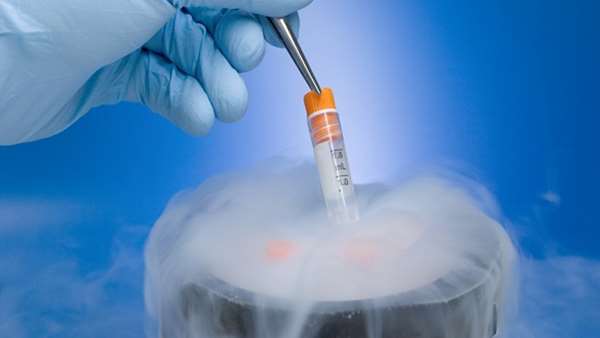Frozen embryos result in just as many live births in IVF
Freezing and subsequent transfer of embryos gives infertile couples just as much of a chance of having a child as using fresh embryos for in vitro fertilization (IVF), research from Ho Chi Minh City, Vietnam, and Adelaide, Australia has found.
Freezing and subsequent transfer of embryos gives infertile couples just as much of a chance of having a child as using fresh embryos for in vitro fertilization (IVF), research from Ho Chi Minh City, Vietnam, and Adelaide, Australia has found.
In results to be published this week in The New England Journal of Medicine, the research team shows that ongoing pregnancy rates and live births were equivalent in a group of IVF women implanted with frozen embryos compared with fresh embryos.
"Frozen embryo techniques are growing in popularity in fertility clinics worldwide. This is one of the reasons why our research is important for fertility clinicians and researchers, and of course couples who are hoping to have a child," says lead author Dr Lan N. Vuong from the Department of Obstetrics & Gynecology, University of Medicine and Pharmacy at Ho Chi Minh City, and My Duc Hospital, Ho Chi Minh City.
Dr Vuong"s work was conducted in collaboration with Professor Ben Mol, from the University of Adelaide"s Robinson Research Institute, a member of the South Australian Health and Medical Research Institute"s Healthy Mothers, Babies and Children theme; and Professor Robert Norman, also from the Robinson Research Institute, University of Adelaide and a leading fertility unit, Fertility SA.
The study investigated almost 800 women who had infertility not related to polycystic ovarian syndrome (PCOS). Women were given one cycle of IVF, where either a transfer of fresh embryos occurred, or all embryos were frozen and one cycle of thawed embryos occurred subsequently without the use of IVF drugs.
After the first completed cycle of IVF, ongoing pregnancy occurred in 36% of women in the frozen embryo group, and in 35% of the fresh embryo group.
Rates of live birth after the first embryo transfer were 34% in the frozen embryo group, and 32% in the fresh embryo group.
"Previous research has shown that women who experience infertility because of PCOS benefit from significantly higher live birth rates from frozen embryos in IVF procedures, but evidence was lacking for this approach in non-PCOS patients," says author Professor Mol.
"This new study shows that infertile women not suffering from PCOS have equivalent live IVF birth rates from frozen embryos, which is important news for infertile women worldwide.
"Our key finding is that freezing embryos for IVF is not harming a couple"s chances of having a baby. After the first fresh embryo transfer, it will be possible to freeze the remaining embryos and transfer them one by one, which is safe and effective."
Professor Mol says that while many clinics are moving completely away from fresh embryo transfers, the freezing process adds additional costs in IVF and does not result in higher rates of live births. "Couples concerned about such unnecessary costs of freezing all embryos do not need to go down that path, and will still have the same live birth success rate," he says.
Dr Vuong says: "Our research results are specific to a common freezing method known as Cryotech vitrification, so it may not apply to all embryo freezing techniques currently being used. Further research will be needed to compare pregnancy outcomes and live birth rates from other embryo freezing techniques."
Professor Mol says the strong collaboration between the Australian group in Adelaide and Vietnamese researchers has helped to capitalize on and develop research strengths in both countries.
"The quality and speed of research emerging from the University of Medicine and Pharmacy at Ho Chi Minh City, and My Duc Hospital in Vietnam, has been exceptional. Infertility is a growing problem throughout the world, including Asia.
"We have been delighted to provide our expertise to what will become an increasingly important field of research in the region. The study took just over a year to recruit participants, which is unheard of according to Western standards," Professor Mol says.
Reference: http://www.nejm.org/doi/10.1056/NEJMoa1703768





ارسال به دوستان